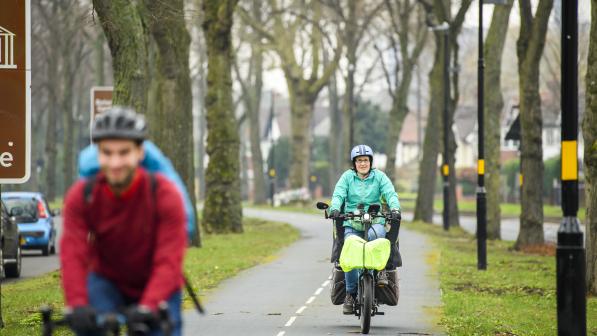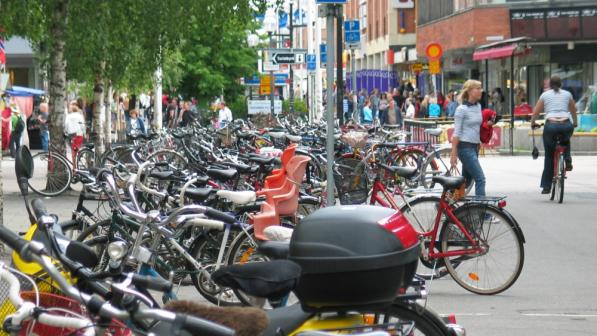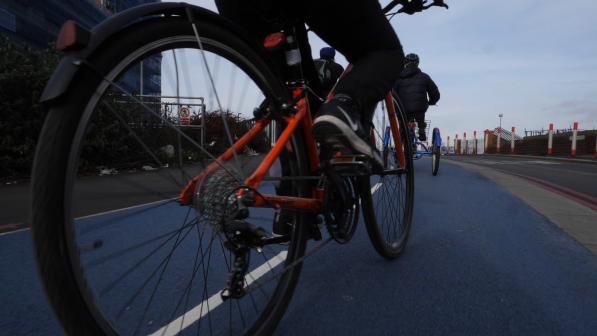Government needs more than bold vision to increase cycling and walking

At the end of my road in Tottenham we have a sort-of cycle lane. It consists of green paint along a stretch of pavement and runs for 10 metres, with one end tipping you out into a busy junction of lorries and SUVs, the other trailing into a pile of bin bags.
Presumably when this lane was painted, the council had plans for bigger and better things – a connected network of decent cycle lanes, protecting more vulnerable road users from heavy traffic. But, like the government’s own active travel strategy, the initial enthusiasm hasn’t been backed up by the required sustained commitment.
Separate cycle paths have for many years now been the accepted route towards getting more people cycling in our cities and towns. They keep those on bikes away from motorists, making cycling a more appealing alternative to the car for shorter journeys. It also makes those on bikes feel safer, which is crucial, as the greatest barrier to cycling remains safety fears.
But now the funding for this sort of infrastructure has been cut by 75%. It’s left many of us wondering: with investment hollowed out, what now is the government’s vision for increasing active travel?
We’re all agreed about the need to increase active travel. Replacing shorter car journeys with walking and cycling makes sense for all of us: it reduces traffic and pollution; and it makes us all fitter and healthier.
There are huge economic benefits: with every £1 invested in active travel, cycling returns an average of around £5-6. For context, a benefit-to-cost ratio greater than or equal to 4 is ‘very high’ value for money. Increasing active travel is also vital to meeting our commitments on net zero, and to future generations.
Active travel then is excellent value for money, but it does require up-front investment.
That’s why the government has already thought long and hard about what we need to do and how much this will cost. In fact, it must do this – it is required by law to set out its Cycling and Walking Investment Strategy. In 2020 it took this further, and its Gear Change Strategy set out excellent practical plans for supporting cycling and walking.
In both documents, investment in the right infrastructure was central. It has even started implementing this work recently, including establishing Active Travel England, to uphold high standards for infrastructure across England.
That’s why it was so disappointing and, frankly, puzzling to see huge cuts to active travel funding for infrastructure announced last month. The original investment plans have been slashed by two-thirds.
This directly undermines the government’s own plans, which it spent so long establishing. That’s why Cycling UK, together with the Walking and Cycling Alliance (WACA) and a very broad group of wider organisations, wrote to the prime minister to ask him to reverse the cuts.
Without this investment, roads like mine will be no safer or more welcoming to those walking and cycling. This investment takes many, many years to reach fruition, so cuts today will continue to hold back our towns and cities in the decades to come. Changing the way we travel and making it easier for more of us to have more choice about how we get around is a long-term commitment. It takes vision and it takes tenacity and is an essential investment in our neighbourhoods.


